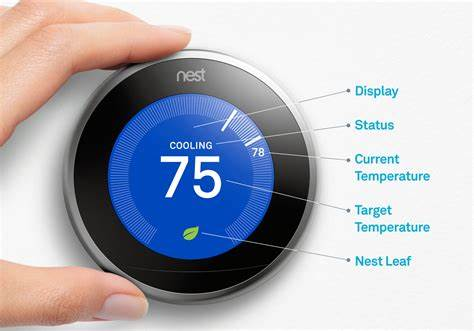The Rise of Mini-Split Systems in Green Home Building and Energy-Efficient Architecture
- Ron Smith
- Jan 29, 2024
- 4 min read
Updated: Feb 4, 2024
Summary
Mini-split systems are revolutionizing the way we think about heating and cooling in homes, especially in regions like Arizona. With a focus on energy efficiency, easy installation, and adaptability, they are becoming a popular choice for homeowners seeking eco-friendly home design. Dive into the benefits, considerations, and integration possibilities of these systems in the realm of sustainable building.

Introduction to Mini-Split Systems
Mini-split systems are emerging as a preferred choice for homeowners seeking energy-efficient alternatives to traditional HVAC systems. These Green HVAC systems offer targeted heating and cooling, eliminating the need for extensive ductwork and providing a range of benefits that align with green building practices. As the world becomes more environmentally conscious, the demand for sustainable solutions in every aspect of home building is growing. Mini-splits, with their energy-saving capabilities and reduced carbon footprint, are at the forefront of this green revolution.
Key Features of Mini-Split Systems in Energy-Efficient Homes
Energy Efficiency: Mini-splits can save up to 30% on energy bills compared to traditional systems. Their design allows for targeted heating and cooling, ensuring that energy is used optimally in energy-efficient homes.
Easy Installation: No ductwork means quicker and less invasive installation. This not only reduces labor costs but also minimizes disruptions to the home's structure.
Zoning Capabilities: Control temperatures independently in different zones. This feature ensures that unused rooms aren't unnecessarily heated or cooled, leading to energy savings.
Quiet Operation: Reduced noise levels enhance comfort. Gone are the days of loud HVAC systems; mini-splits operate silently, ensuring a peaceful home environment.
Eco-friendly Refrigerant: Lower environmental impact with R410A refrigerant. This refrigerant is known for its reduced potential for ozone depletion.
Cost-Effective: Long-term savings on energy and maintenance. While the initial investment might be higher, homeowners can recoup costs through energy savings.
Flexibility: Suitable for homes, apartments, and commercial buildings. Their versatile design makes them ideal for various settings.

Making the Decision: Questions for Home Builders
Before integrating mini-splits, builders should consider:
Benefits of mini-splits in residential construction.
Comparison with traditional HVAC systems.
Ideal placement for units.
Building requirements for mini-split integration.
Compatibility with smart home technology.
Understanding these factors ensures that mini-splits are integrated seamlessly, offering maximum benefits to homeowners.
Benefits of Mini-Split Systems in Residential Construction
From superior energy efficiency to improved indoor air quality, mini-splits offer a plethora of advantages. Their versatility, cost-effectiveness, and eco-friendly features make them a top choice for modern homes. As homeowners become more aware of their carbon footprint, the demand for sustainable solutions is growing. Mini-splits, with their reduced energy consumption and green features, meet this demand head-on.
Comparing Mini-Splits with Traditional HVAC Systems
While traditional HVAC systems rely on ducts, leading to energy losses, mini-splits provide direct heating and cooling. Their energy efficiency, eco-friendly refrigerants, and potential for long-term savings make them a sustainable choice. Additionally, their modular design allows for flexibility, ensuring that homes of all sizes can benefit from their features.
Installation Considerations for Mini-Splits
Placement is crucial. Wall strength, room size, and layout play a role in determining the best location for units. Additionally, builders should consider electrical requirements, line set paths, and outdoor unit placement. Proper installation ensures optimal performance and longevity of the system.

Smart Home Integration and Maintenance
Modern mini-splits can integrate with smart home technology, offering remote control and energy monitoring. Regular maintenance, including cleaning and professional check-ups, ensures their longevity and efficiency. As smart homes become more prevalent, the ability of mini-splits to integrate seamlessly will be a significant advantage.
The Role of Mini-Splits in Sustainable Home Building
Sustainable home building is not just a trend; it's a necessity in today's world. With the increasing awareness about climate change and the need for energy-efficient solutions, mini-split systems are at the forefront. They align perfectly with the principles of green building, offering a reduced carbon footprint, energy savings, and a sustainable approach to heating and cooling. Mini-splits are designed to provide zoned heating and cooling, allowing homeowners to control the temperature in specific areas of their homes. This not only ensures optimal comfort but also reduces energy wastage.

Case Study: Arizona's Green Home Revolution
Arizona, with its unique climate challenges, is witnessing a surge in green home constructions. Mini-split systems are playing a pivotal role in this revolution. Homeowners are experiencing not just energy savings but also enhanced comfort, making mini-splits a preferred choice in the region. Arizona's scorching summers and chilly winters demand efficient heating and cooling solutions. Mini-splits, with their ability to provide targeted temperature control, are proving to be the answer.
Overcoming the Myths: Debunking Mini-Split Misconceptions
While mini-splits are gaining popularity, there are still misconceptions surrounding them. Some believe they are not suitable for larger homes or that they are more expensive in the long run. It's essential to address these myths and provide factual information to potential users. Modern mini-splits are designed to cater to homes of various sizes, and their long-term savings potential makes them a cost-effective choice.
Future of Mini-Splits: What's Next?
The future looks promising for mini-split systems. With technological advancements, we can expect even more energy-efficient models, better integration with smart home systems, and innovative designs that blend seamlessly with home interiors. The integration of AI and IoT will enable predictive maintenance and automatic temperature adjustments.
Conclusion: Embracing the Mini-Split Revolution
The rise of mini-split systems in green home building and energy-efficient architecture is undeniable. As homeowners and builders become more environmentally conscious, the demand for sustainable and efficient heating and cooling solutions will only grow. It's time to embrace the mini-split revolution and build a greener future.
External Resources:



